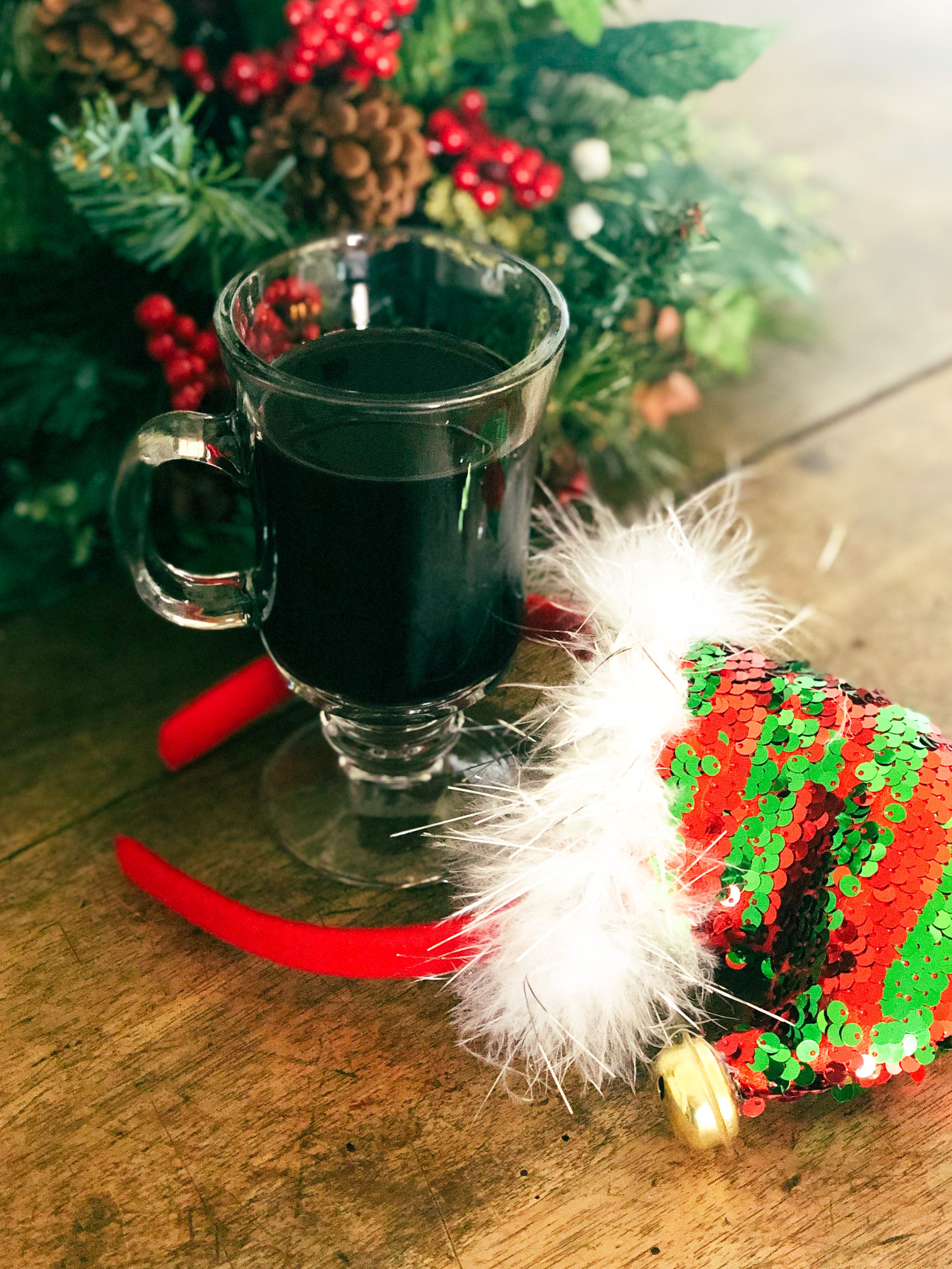Mulled Wine
In February of 2012, my husband and I joined my mom and sister on a trip to Vienna and Prague. To this day, it is one of my most memorable European vacations and one I’d highly recommend. My sister might say that I invited myself on that trip, and she may technically be right. But can you blame me? It was Eastern Europe, and I had nothing but time on my hands and disposable income.
Vienna’s classical music scene and pastries were mesmerizing. We took in a performance at the Vienna Opera House, attended mass with the Vienna Boys Choir, and dined on sachetorte at Café Diglas. As if Vienna wasn’t wonderful enough, Prague charmed its way into my heart with her beautiful medieval buildings, Gothic architecture and winding streets. Although temperatures were below freezing, I almost forgot my toes were numb because the city was so picturesque in the snow.
It was on this trip, nearly 10 years ago, that I had my first cup of svarák (mulled wine) in front of Prague’s Astronomical Clock, and it’s been my favorite holiday drinks ever since. There are many regional variations of hot wine across Europe: glüwein in Germany, vin chaud in France, glögg in Demark, etc. But no matter what part of the world you live in, drinking mulled wine is experiencing the joy of the holidays in a cup. The heat from the wine not only warms your bones, but the hint of citrus and the aroma of warming spices are also a treat for your nose.
Before you make homemade mulled wine, here are a few pointers on the process.
What Wine to Use:
While just about any bottle of red wine will do, you generally want to use a dark, full bodied, fruity wine. Merlot, Zinfandel or Grenache are regulars on the list of “best wine for mulled wine”. Having said that, I use a bottle of French Bordeaux and think it works very well.
Heating the Wine:
When heating the wine, go low and slow. Avoid putting the burner on high heat to speed up the process. Boiling the wine will change the flavor profile and eventually burn off the alcohol. Use low heat until you see steam rising from the top and maintain that temperature.
Storing Mulled Wine:
Can you store leftover mulled wine? Fortunately, yes! Let the mulled wine completely cool before placing it in an air tight container. You can store it in the refrigerator for 3-5 days to keep the holiday spirits high. This also makes homemade mulled wine a fun, festive gift for your neighbors and friends. They might appreciate a change from the proverbial Christmas cookies. No offense to the gingerbread men and women out there.
Playing Around with the Ingredients:
Prior to making mulled wine at home, I looked at countless recipes from an authentic vin chaud to a take on mulled rosé. At the end of the day, these recipes are all loose guidelines. You can easily double or triple a recipe to serve a crowd, or scale it back to use a single bottle of wine. Tweak the ingredients until you get the desired outcome. I wanted my version to mimic the mulled wine I had in Eastern Europe and most recently at a European Christmas Market in Charlotte. So I played around with the ingredients (adding more sugar, water, citrus, etc.) until it yielded “damn that’s good” results.
While my days of sipping mulled wine in Prague’s Old Town Square are in the past, I still think of that trip every time I curl up on the couch in the evenings with a blanket and a warm glass of glüwein.
Mulled Wine

Ingredients
- 1 bottle of red wine (750 ml)
- 1 orange
- 1 cinnamon stick
- 1/2 cup granulated sugar
- 1/2 cup water
- 1 tablespoon mulling spices (I use Penzeys brand)
- 1 tablespoon brown sugar
Instructions
- Pour the bottle of wine in a heavy bottomed pot or a Dutch oven and place on the stove over low heat.
- From the orange, strip one slice of the peel using a vegetable peeler.
- Squeeze the juice from the whole orange and reserve it.
- Add the orange peel, orange juice, granulated sugar, brown sugar, mulling spices, cinnamon stick and water to the pot.
- Keep the heat on low and cook for 20-30 minutes, stirring occasionally. Do not boil it. When you start to see steam rising from the top, you'll know the temperature is hot enough.
- Remove the pot from the heat and let it sit for 5-10 minutes before serving.
- To reheat the wine, simply warm it on the stove in a pot over low heat.
